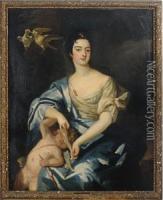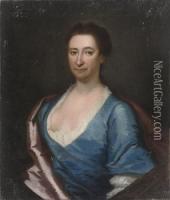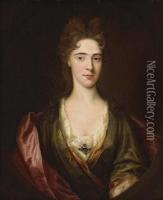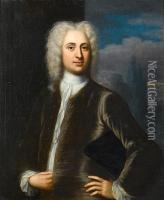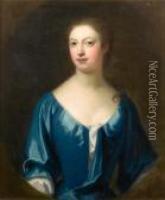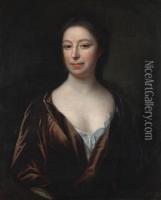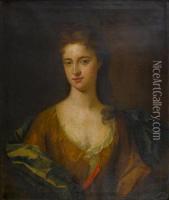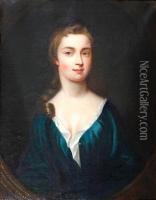Jonathan Ii Richardson Paintings
Jonathan Richardson, often known as 'the Elder' to distinguish him from his son, Jonathan Richardson the Younger, was an influential figure in the world of 18th-century British art. Born in 1667, Richardson was not only a prominent portrait painter but also an accomplished writer and theorist on art, making significant contributions to the intellectual discourse on painting of his time.
Richardson received his early training from the portraitist John Riley. By the age of 20, he had established his own practice and quickly gained a reputation for his skillful portraiture. In the early 18th century, Richardson's portraits were highly sought after by the British aristocracy, and he was considered alongside Sir Godfrey Kneller as one of the leading portrait painters in England. His work was characterized by a certain intellectual character and often conveyed the personality and intellect of his sitters.
Apart from his painting career, Richardson was an avid art collector and scholar. His writings on art, including 'An Essay on the Theory of Painting' (1715) and 'An Essay on the Whole Art of Criticism as it Relates to Painting' (1719), were instrumental in shaping the theoretical framework of art in Britain. His 'Theory of Painting' was a particularly significant contribution and was one of the first significant works of art criticism in English. Richardson advocated for the importance of drawing and the study of classical art as the foundations for good painting, ideas that influenced generations of artists.
Richardson's interest in art education also led him to mentor and train several young artists, the most famous among them being Thomas Hudson, who later became a leading portraitist himself. Richardson's legacy as a teacher was perhaps equally as significant as his contributions as a painter and writer.
He continued to paint and write throughout his life, maintaining a robust intellectual engagement with the arts until his death in 1745. Richardson’s impact on the art world was considerable, and his ideas about art theory and education continued to resonate with artists and intellectuals long after his passing. His son, Jonathan Richardson the Younger, was also an artist and followed in his father's footsteps, though he did not achieve the same level of renown.
